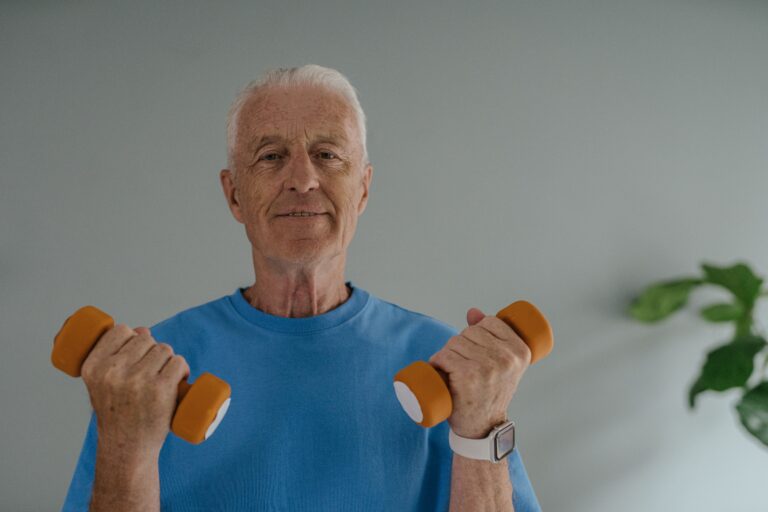Principles of Weight Training
The basic principle of any sort of muscle development is that of overload: contracting a muscle group against added resistance. The way a muscle grows is by splitting, longitudinally, under the strain placed on it, and “healing” after the workout by adding protein. Over a period of time, the overload placed on the muscles is increased a step at a time, and so the muscles continue to develop.
Three Modes of Exercise for Developing Muscles
- Isometric Exercise
- In isometric exercises, you contract a muscle group without moving the joint to which the muscles are attached – for instance, pushing steadily against an immovable wall. These exercises build muscle, but the gain occurs mainly at the angle at which the muscle is exercises.
- Isotonic Exercise
- Isotonic exercises, by contrast, contract a muscle through a range of motion – as you can do with movable weights. The virtue of isotonic exercises is that they build muscle through this full range of isometric exercises.
- Isokinetic Exercises
- Isokinetic exercises also consist of contracting a muscle through a range of movement. But isokinetic exercises, which are performed on machines, use equipment designed to apply maximum stress to the muscles through the whole range of movement.
Isotonic exercises use both free weights and machines. Free weights are barbells and dumbbells – ordinarily used in pairs, one in each hand. The advantage of free weights is that they allow movement in any direction and so lend themselves to an enormous variety of exercise routines; and they are relatively inexpensive. Their disadvantage is that they do not isolate muscles as clearly as machines do; and the stress that they provide is not nearly as uniform over the full range of motion as that provided by some machines.

Machines can isolate muscle groups very efficiently by maintaining your body in a particular position and by making you move a weight along a predetermined path. And isokinetic machines are also designed to provide variable resistance through the full range of motion, so that as you move a limb, the resistance stays at or close to maximum.








